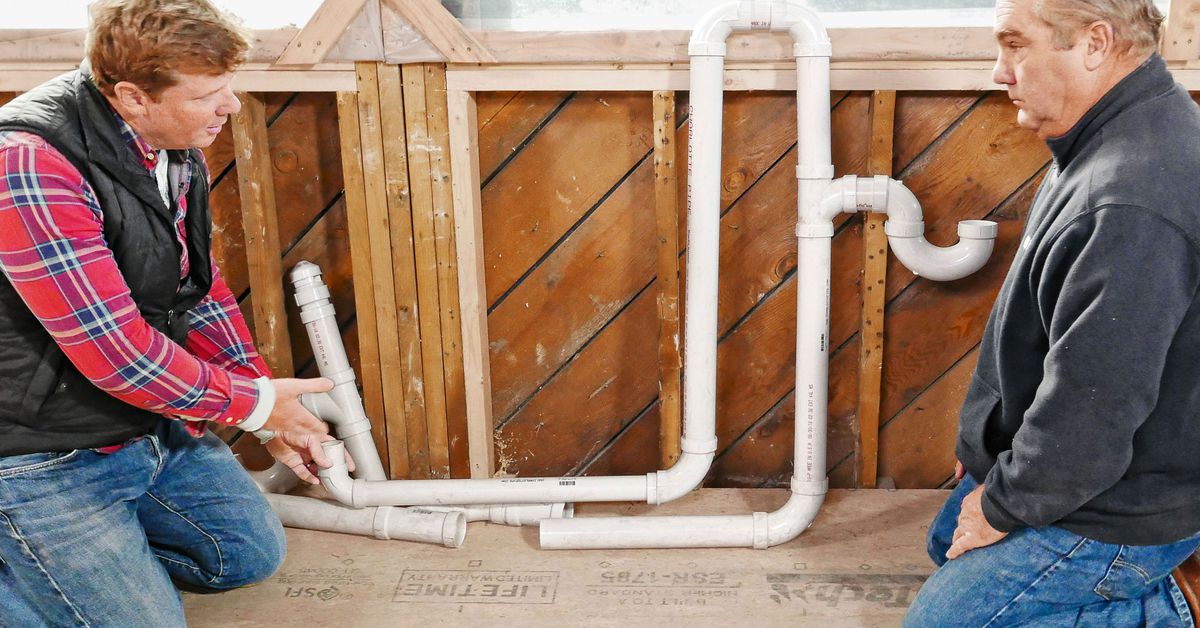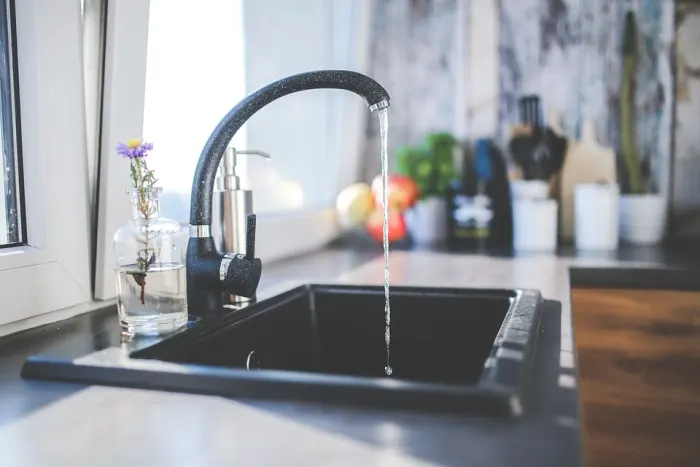Plumbing Sound Type Checklist
Click HereEverybody seems to have their private way of thinking in relation to Diagnose Unwanted Plumbing Noises.

To diagnose noisy plumbing, it is essential to establish initial whether the unwanted noises happen on the system's inlet side-in various other words, when water is transformed on-or on the drain side. Sounds on the inlet side have actually differed reasons: excessive water pressure, used valve as well as tap components, poorly attached pumps or various other appliances, improperly put pipe fasteners, as well as plumbing runs having a lot of limited bends or other limitations. Sounds on the drain side usually stem from bad place or, just like some inlet side noise, a layout containing tight bends.
Hissing
Hissing noise that happens when a tap is opened a little typically signals extreme water stress. Consult your local water company if you suspect this problem; it will certainly be able to tell you the water stress in your location as well as can mount a pressurereducing shutoff on the incoming water system pipeline if required.
Thudding
Thudding noise, frequently accompanied by shuddering pipelines, when a tap or device valve is shut off is a problem called water hammer. The noise and resonance are brought on by the resounding wave of stress in the water, which instantly has no area to go. Occasionally opening up a valve that discharges water promptly into an area of piping having a limitation, elbow, or tee fitting can generate the very same problem.
Water hammer can usually be treated by installing fittings called air chambers or shock absorbers in the plumbing to which the issue valves or taps are linked. These devices allow the shock wave produced by the halted flow of water to dissipate in the air they have, which (unlike water) is compressible.
Older plumbing systems might have brief upright sections of capped pipe behind walls on tap competes the exact same purpose; these can eventually loaded with water, lowering or destroying their performance. The cure is to drain pipes the water system completely by shutting down the major supply of water shutoff and also opening all faucets. Then open up the major supply shutoff and also close the faucets one at a time, starting with the tap nearest the valve and finishing with the one farthest away.
Babbling or Shrilling
Extreme chattering or shrieking that occurs when a shutoff or faucet is switched on, and that usually vanishes when the fitting is opened fully, signals loosened or faulty interior components. The option is to replace the valve or tap with a new one.
Pumps and also appliances such as cleaning devices and also dishwashing machines can move motor sound to pipes if they are incorrectly attached. Connect such products to plumbing with plastic or rubber hoses-never rigid pipe-to isolate them.
Various Other Inlet Side Noises
Squeaking, squealing, scraping, breaking, as well as touching typically are brought on by the growth or tightening of pipelines, usually copper ones supplying warm water. The audios occur as the pipelines slide against loose bolts or strike nearby home framework. You can typically identify the area of the issue if the pipelines are revealed; just comply with the noise when the pipelines are making noise. Most likely you will certainly discover a loose pipeline wall mount or a location where pipes lie so near floor joists or various other mounting pieces that they clatter versus them. Connecting foam pipeline insulation around the pipes at the point of get in touch with need to fix the issue. Make certain bands and wall mounts are safe and secure and supply sufficient assistance. Where feasible, pipeline bolts need to be attached to enormous architectural elements such as foundation wall surfaces as opposed to to mounting; doing so reduces the transmission of vibrations from plumbing to surface areas that can intensify and transfer them. If attaching bolts to framework is inescapable, cover pipelines with insulation or various other resistant product where they call bolts, and sandwich the ends of new fasteners in between rubber washing machines when mounting them.
Dealing with plumbing runs that deal with flow-restricting limited or many bends is a last hope that must be embarked on just after seeking advice from an experienced plumbing contractor. However, this scenario is rather typical in older homes that may not have actually been developed with indoor plumbing or that have seen several remodels, especially by beginners.
Drainpipe Noise
On the drainpipe side of plumbing, the chief objectives are to eliminate surfaces that can be struck by dropping or hurrying water as well as to protect pipes to have inescapable audios.
In new building and construction, bath tubs, shower stalls, toilets, as well as wallmounted sinks and also basins must be set on or versus durable underlayments to lower the transmission of audio via them. Water-saving toilets and also taps are less loud than standard models; install them instead of older kinds even if codes in your area still permit using older fixtures.
Drains that do not run vertically to the basement or that branch right into horizontal pipeline runs supported at flooring joists or other mounting present specifically troublesome noise problems. Such pipes are large enough to emit significant resonance; they additionally bring considerable quantities of water, that makes the situation even worse. In brand-new building, define cast-iron soil pipes (the large pipelines that drain bathrooms) if you can afford them. Their enormity includes much of the noise made by water passing through them. Additionally, stay clear of directing drainpipes in wall surfaces shown to bed rooms as well as spaces where people gather. Wall surfaces consisting of drains need to be soundproofed as was defined previously, making use of dual panels of sound-insulating fiberboard and wallboard. Pipelines themselves can be covered with special fiberglass insulation produced the function; such pipes have an invulnerable vinyl skin (in some cases consisting of lead). Outcomes are not constantly sufficient.
WHY IS MY PLUMBING MAKING SO MUCH NOISE?
This noise indeed sounds like someone is banging a hammer against your pipes! It happens when a faucet is opened, allowed to run for a bit, then quickly shut — causing the rushing water to slam against the shut-off valve.
To remedy this, you’ll need to check and refill your air chamber. Air chambers are filled with — you guessed it — air and help absorb the shock of moving water (that comes to a sudden stop). Over time, these chambers can fill with water, making them less effective.
You’ll want to turn off your home’s water supply, then open ALL faucets (from the bathroom sink to outdoor hose bib) to drain your pipes. Then, turn the water back on and hopefully the noise stops! If you’re still hearing the sound, give us a call to examine further.
Whistles
Whistling sounds can be frustrating, as sometimes the source isn’t easily identified. However, if you can pinpoint which faucet or valve that may be the cause, you’ll likely encounter a worn gasket or washer — an easy fix if you replace the worn parts!Whistling sounds from elsewhere can mean a number of things — from high water pressure to mineral deposits. Your best plan of attack here is to give our plumbing experts a call. We’ll be able to determine where the noise is coming from and what the cause may be, then recommend an effective fix!
Cracks or Ticks
Cracking or ticking typically comes from hot water going through cold, copper pipes. This causes the copper to expand resulting in a cracking or ticking sound. Once the pipes stop expanding, the noise should stop as well.
Pro tip: you may want to lower the temperature of your water heater to see if that helps lessen the sound, or wrapping the pipe in insulation can also help muffle the noise.
Bangs
Bangs typically come from water pressure that’s too high. To test for high water pressure, get a pressure gauge and attach it to your faucet. Water pressure should be no higher than 80 psi (pounds per square inch) and also no lower than 40 psi. If you find a number greater than 80 psi, then you’ve found your problem!
Next step is to give us a call in order to install a pressure regulator. Trust us, you don’t want to wait to resolve this issue. Not only is the sound annoying, but high water pressure can be destructive to your home — including damaging certain appliances, like your washer and dishwasher.
Dripping
You might be accustom to the slow quiet drip your kitchen faucet makes. You might have even tuned out your bathroom sink dripping and drabbing all day long — but it’s time to find its cause.
A slow drip could signify a variety of easy to fix issues, such as a worn out O ring, or loose part. And by ignoring the drip, you could be wasting up to 2,000 gallons of water a year! So start conserving water — get it looked at ASAP.
https://www.pwessig.com/blog/2018/december/why-is-my-plumbing-making-so-much-noise-/

Hopefully you liked our post about How To Fix Noisy Pipes. Thanks a ton for spending some time to read our blog. In case you liked our article please don't forget to share it. I cherish reading our article about How To Fix Noisy Pipes.
Schedule And Pricing